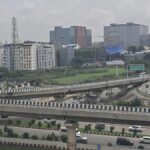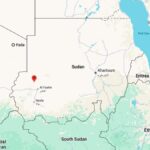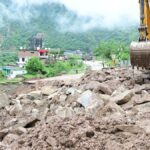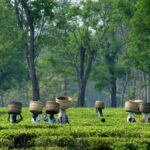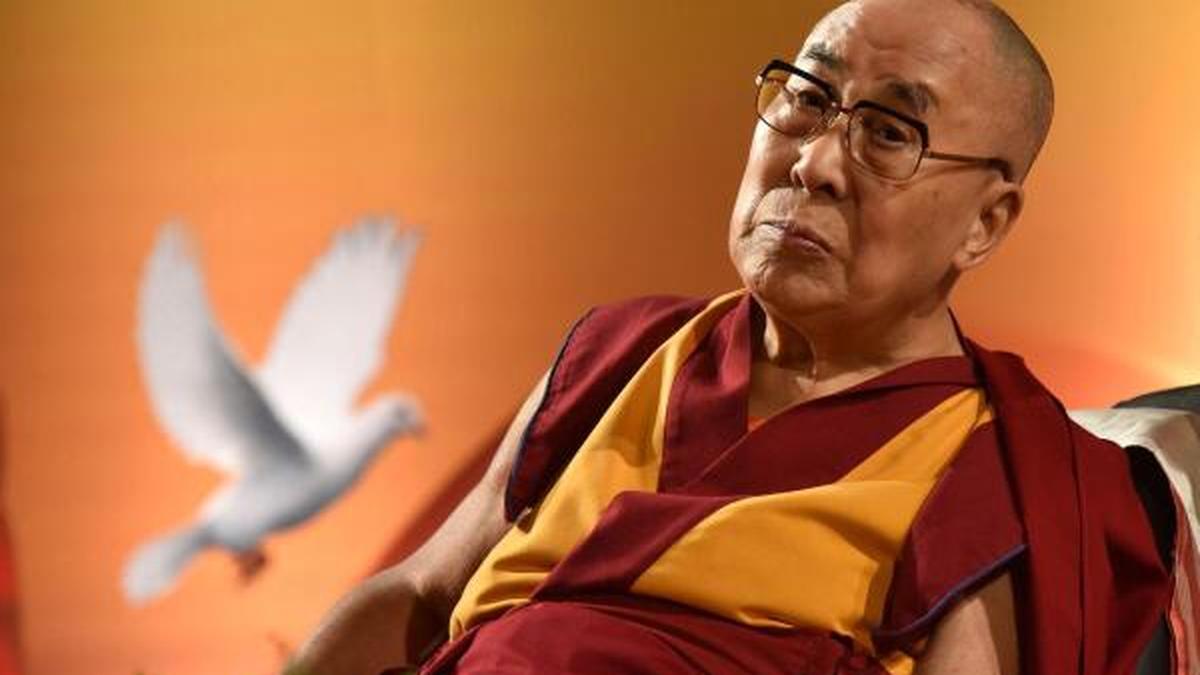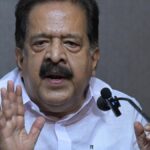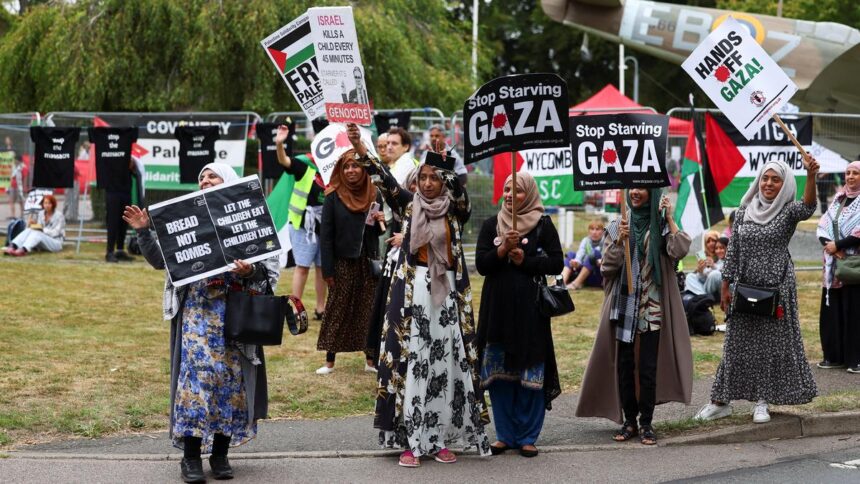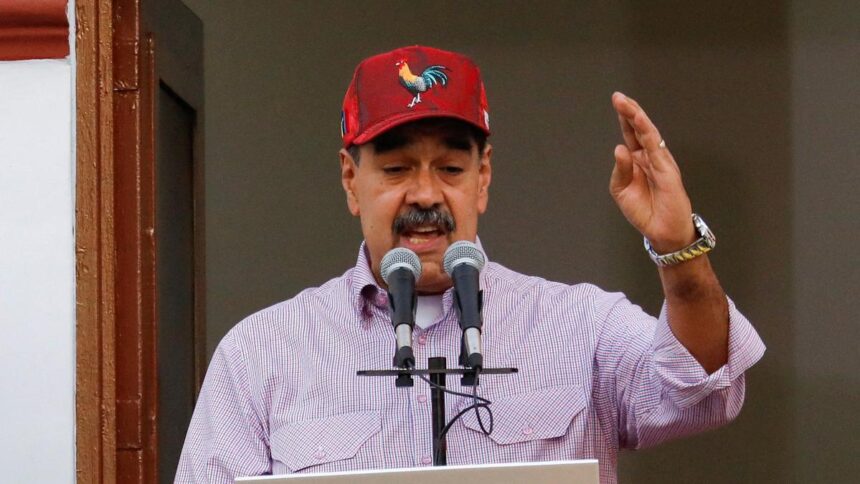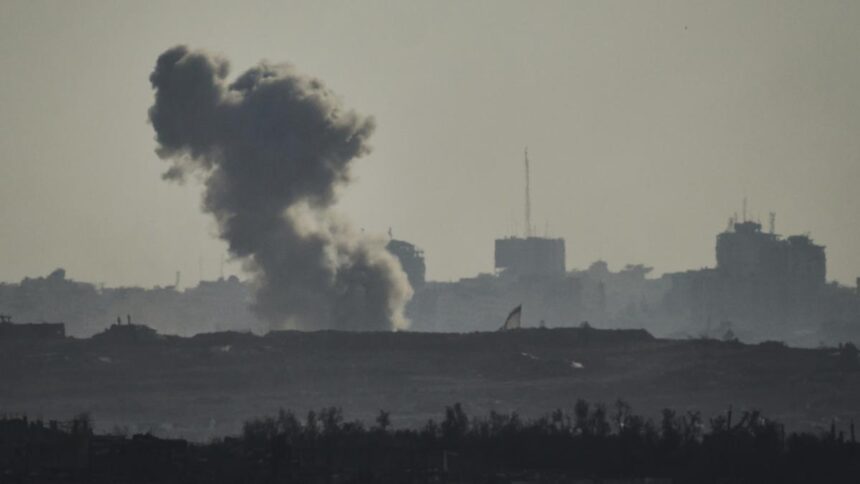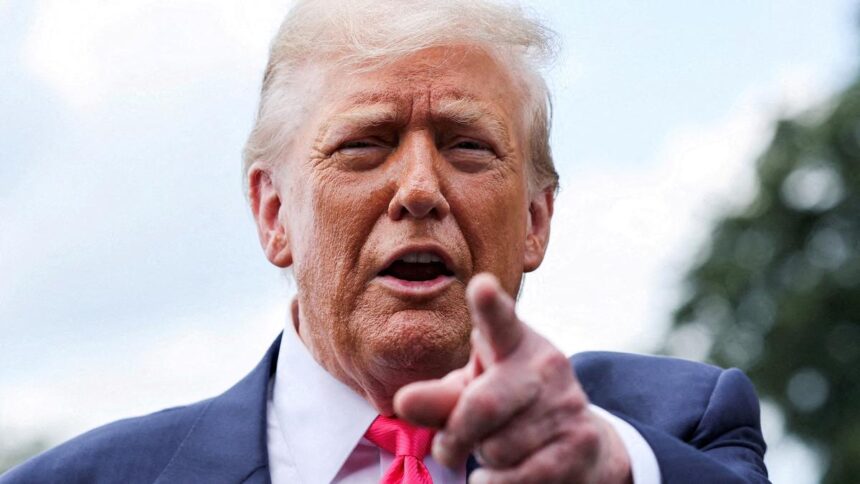The 14th Dalai Lama, Tenzin Gyatso, turned 90 this year, and his followers have started a year-long celebration in honour of the occasion. This year is more significant than the others, as the Dalai Lama has said that he will announce his plans for a successor after he turns 90.
Celebrations commenced on July 1, and the Dalai Lama formally affirmed on July 2 that the 600-year-old institution of the Dalai Lama will continue after his death. This was ahead of his actual 90th birthday on July 6, 2025.
As dignitaries pay respects, and events continue to take place around the world to honour the revered head of Tibetan Buddism, we take a look at the history of the Dalai Lama.
The Dalai Lama as an institution
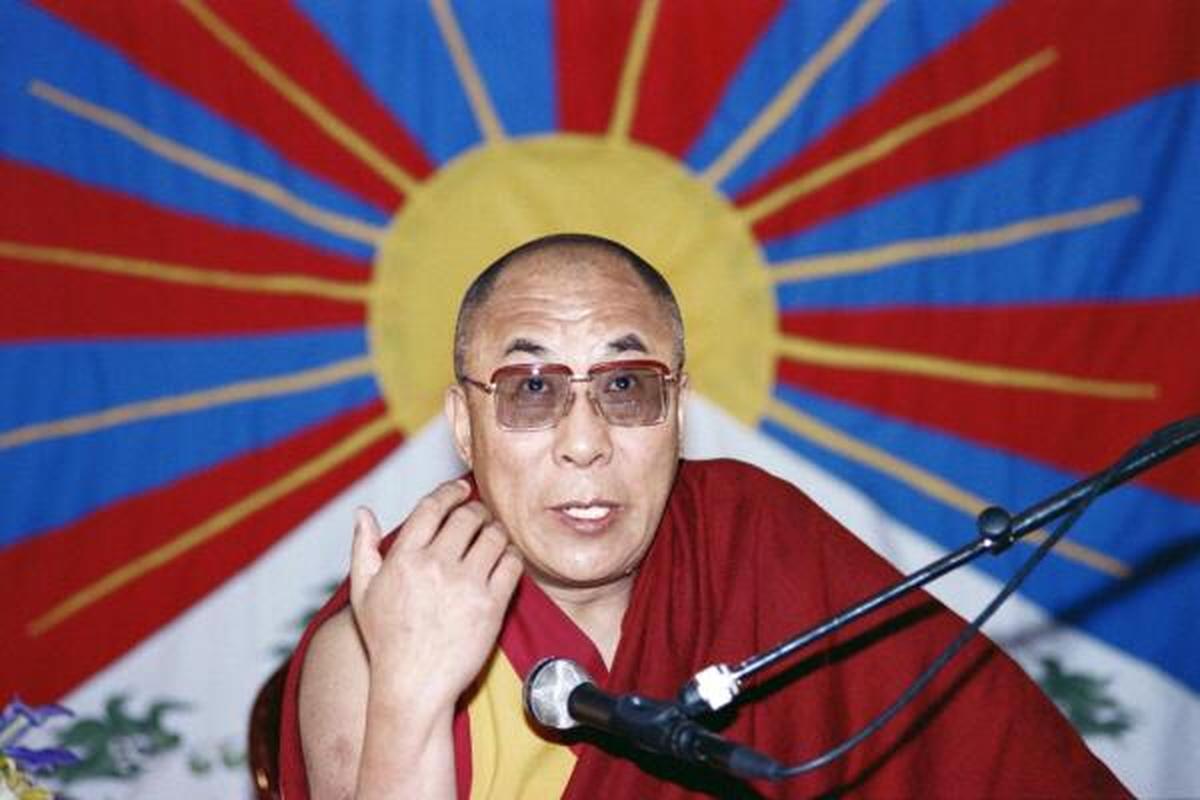
Born as Lhamo Thondup in 1935, he was enthroned as the Dalai Lama in 1940.
| Photo Credit:
AFP
The 14th Dalai Lama, known to the Tibetan people as ‘Gyalwa Rinpoche’ and by the spiritual name Tenzin Gyatso, is the present spiritual head of Tibetan Buddishm. Born as Lhamo Thondup in 1935, he was enthroned as the Dalai Lama in 1940.
The position of Dalai Lama has been one of great religious and political prestige over the years. The Dalai Lama is annointed as the custodian of the teachings of Avalokiteshvara, a Bodhisattva and an important deity in Tibetan Buddhism. He is the theocratic ruler of Tibet, which traditionally consisted of the three regions of Khampas, Amdos, and U-Tsang.
The institution of the Dalai Lama is believed to be carried on through reincarnation. Reports have noted the signs associated with him according to traditional beliefs, including “the marks as of a tiger-skin on his legs; eyes and eyebrows that curve upwards on the outside and are rather long; large ears; two pieces of flesh near the shoulder-blades and a counch-shell imprint on one of the palms of his hands.” The future Lama is also expected to select articles of the previous Dalai Lama from among those placed in front of him, if there is any doubt about his identity as the true incarnation. .
Per tradition, once found, the would-be Dalai Lama was taken away to the Potala Palace in Lhasa at a very young age (three or four) and brought up under watchful guidance to be the future “God-king” of Tibet, receiving tutoring in spiritual and statecraft matters. The parents and siblings of the child also reside in a mansion in Lhasa. The father of the Dalai Lama is given the title of Kung, which is the highest title that can be held by a civillian in Tibet. Throughout his life, the Dalai Lama is expected to maintain celibacy and not partake of intoxicants.
At the time of initiation, the Dalai Lama is accorded a fearsome title: Geston Ngwang Lbsang Tengin Gyapso Sisunwangyur Tshungpa Mapai Dhepal Sangpo. When translated, this reads: “The Holy One, the Gentle Glory, Powerful in Speech, Pure in Mind, of Divine Wisdom, Holding the Faith, Ocean-Wide.”
Second in rank to the Dalai Lama is the Panchen Rinpoche, or Panchen Lama, who is traditionally housed in Tashi Lhunpo near Shigatse, 200 miles from Lhasa.
History of the Dalai Lamas
Buddhism arrived in China sometime in the the fourth century A.D. The emergence of Tibetan Buddhism as a separate strand, however, took place much later, around the seventh century A.D. The institution of a theocratic ruler for Tibet can be traced back 600 years, to the age of the Mongolian Emperors in China.
According to an article from The Hindu’s archives, towards the end of the 13th century, Kublai Khan (1216-96 A.D.), the first Mongol Emperor of China, invited the head Lama of the Sakya Lamasery (’Phags-pa, according to some accounts) to his Court. The Lama was granted sovereign control over Tibet after he converted the Emperor to Buddhism. This marked the first instance of a priest-king ruling over Tibet. This regime, however, lasted only for 75 years (1270 – 1345 A.D), due to constant invasions by the Mongols and northern Tibetans.
Tibetan Buddhism saw major reform in the 14th century, under the aegis of Tsong-khapa. In the latter part of the 14th century, he founded the Gelugpa Sect or the Yellow Hats of Tibetan Buddhism, as contrasted with the already-existing Red Hats. He was succeeded by Ganden Truppa, a herdsman’s son from eastern Tibet. His spirit was supposed to have entered an infant born two years later, resulting in the popularity of the concept of reincarnation.
In the sixteenth century, Sonam Gyatso, the third incarnate, was accorded the title of the Dalai Lama Vajradhara (the all-embracing Lama, holder of the thunderbolt) by Mongol emperor Altai Khan, creating the institution of the Dalai Lama. A total of 14 Dalai Lamas have existed in history, with 13 having attained nirvana, per Buddhist belief.
For a couple of centuries, the Yellow Hats ruled over Tibet, with occassional uprisings by the Red Hats (1641) and invasions by Mongols, the Chinese and the British. In 1706, the then Dalai Lama (sixth) was removed forcibly by the Chinese, who proposed a replacement. This was not acceptable to the Tibetans, sparking war between them and the Chinese. China soon gained control over the region. The succeeding Dalai Lamas were selected according to Chinese specifications, and several of them met untimely and mysterious deaths..
The 13th Dalai Lama (1876-1933) went into self-exile a few times, also seeking refuge in Mongolia during the Younghusband expedition in 1904, where a British Mission was dispatched to Tibet for negotiations. It morphed into a military expedition after the Tibetans refused to receive the negotiators. The expedition concluded a treaty with the residual Tibetan government in Lhasa, spurring the growth of British influence in the region.
Alarmed by this, China’s rulers (at that point still under rule by a Chinese monarch) invaded Tibet in 1910. The 13th Dalai Lama then escaped across the Himalayas with an entourage of 200, seeking refuge in India. He was granted asylum by the then British government, and stayed in Darjeeling till 1912. He returned to Lhasa after the Tibetans successfully expelled the Chinese during the Chinese Revolution of 1911, which saw the overthrow of the monarchy and soon, the establishment of the first Chinese republic under the Nationalist Party (Kuomintang) founded by Sun Yat-Sen.
An attempt by the Chinese government to take over Tibet in 1917 was met with defeat.
The 13th Dalai Lama attained salvation in 1933. His successor, the present Dalai Lama was found in October 1937, after a search in Eastern Tibet, in the province of Koko Nor near Sining. On seeing one of the search party members, the child, the son of Tibetan farmers and only two years old, reportedly said “Lama, Lama,” and also selected several articles of the former Lama. After some resistance from local authorities, who demanded bribes, the searchers finally arrived in Lhasa in Sepet,ber 1939, and the child was declared the true incarnation of the Dalai Lama. He was installed as the 14th Dalai Lama at the beginning of the Tibetan New Year in February 1940 and attained majority in 1952. By this time, however, the powers of the Dalai Lama were circumscribed by the Chinese People’s Republic, under the rule of the Chinese Communist Party, and he had been reduced to a titular head.
In 1959, fearing for his life, the Dalai Lama and several of his officials fled across the Himalayas, crossing over into India and seeking political asylum. Since 1960, the Dalai Lama has been in Dharamshala, which has earned the epithet Little Lhasa. His seat is the Tsuglagkhang, also known as the Dalai Lama Temple complex, in Dharamshala.
He has established a ‘Tibetan government-in-exile,’ now known as the Central Tibetan administration, with a ‘Draft Constitution for Future Tibet.’ There is also a Tibetan Parliament in Exile (TPiE), made up of 45 MPs who comprise elected representatives of the diaspora in India, Australasia, Europe, and the U.S., and meet for bi-annual sessions in Dharamshala.
Current status of the Dalai Lama
Over the years, the Dalai Lama has remained both a venerated religious leader and a central rallying point for those seeking to free Tibet. He has engaged in advocacy on the international stage with non-profits, Tibetan diaspora, world leaders and even celebrities from Hollywood. He won the Ramon Magsaysay award for his community leadership in 1959, and was awarded the Nobel Peace Prize in 1989.
Tibetans have said that the Chinese government has continued repression of cultural and religious freedom in the Greater Tibet region, including causing great damage during the Chinese Cultural Revolution years (1966-1976). The Dalai Lama has also made the statistically shaky claim that China has made Tibetans a minority among the majority Han Chinese population.
Protests for Tibet have continued, particularly on the anniversary of the March 10 uprising. There were several protests in the 80s, and the Chinese government even banned the worship of the Dalai Lama in 1994. Not all protests have been non-violent. Riots took place in Lhasa in 2008, with the participation of militant monks from the Drepung Monastery. Self-immolation protests were carried out in 2011 by Tibetans protesting Chinese policies.
Multiple rounds of talks have been held between the Chinese government and the Dalai Lama to resolve the Tibet issue, including secret talks in 1982 and 1984, and at least nine rounds from 2002 to 2012. The Chinese government has regarded the Dalai Lama as a ‘splittist’ or ‘separatist,’ and has indicated that any talks wold be for the return of the Dalai Lama for a visit, not for the future of Tibet.
The Dalai Lama has also sought international assistance to push for Tibetan autonomy. Some of these, highlighted by N. Ram in a 2007 article for The Hindu are a Five Point Peace Plan unfurled in a September 1987 address to members of the U.S. Congress; the elaboration of these five points in the Strasbourg Proposal of June 1988; and an open letter written to Deng Xiaoping in September 1992.
Some of his moves have invited criticism. For example, in 1959, against Prime Minister Nehru’s advice, he sought the UN’s intervention for the Tibet issue. Soon after India granted asylum, Chinese officials and media alleged that the centre of the Tibetan revolution shifted to Kalmipong and then Musoorie. These charges were refuted by Mr. Nehru in speeches to Parliament. The Indian government, both then and today has clarified its stance, reiterating its belief in the One China policy on several instances, recognising that “the Tibet Autonomous Region is part of the territory of the People’s Republic of China.” It has also indicated that it would not allow Tibetans “to engage in anti-China political activities in India.”
In 2001, the Dalai Lama gave up handling of most political matters, creating a system of elected political leadership. In 2011, he fully relinquished his political roles. The current elected leader of the Tibetan people is Penpa Tsering.
Today the Dalai Lama says he is committed to a “Middle Way” approach to resolve the Tibet question. In a 2018 interview with The Hindu, he said: “Tibet is an independent nation, but now the time has come for it to embrace change. The ancient reality has changed. We will remain within the People’s Republic of China, but we should have the full right to preserve our ecology and culture.”
It is a sentiment he reiterated in 2023, telling a group of journalists including The Hindu’s Suhasini Haidar that “We want to have full autonomy, as a part of the People’s Republic of China. Then we can help millions of Chinese, [without] political separation, and remaining a part of the People’s Republic.”
Although he has acknowledged that many Chinese people wish for him to return to Tibet, and has indicated that he would like to visit Lhasa, he has expressed the wish to remain in India. “I was born in Tibet, but my spiritual knowledge is from here, from Nalanda in India,” he said in the 2023 interview, adding that this meant “half my body is from here at least.” (Nalanda was an ancient Indian centre of learning, particularly for Buddishm).
On the issue of the next Dalai Lama, the Dalai Lama says it will be his reincarnation chosen by officers of the Gaden Phodrang Trust., which was set up by him in 2015 to “maintain and support the tradition and institution of the Dalai Lama” with regard to his religious and spiritual duties. In his March 2025 book “Voice for the Voiceless“, he specified that his successor would be born outside China.
Before his 90th birthday, he reiterated his position via a post on X:
The Chinese foreign ministry responded to this, saying that the Dalai Lama’s succession must comply with Chinese laws and regulations as well as religious rituals and historical conventions. A selection ritual, in which the names of possible reincarnations are drawn from a golden urn, dates to 1793, during the Qing dynasty.

Further, the Communist Party has issued regulations on reincarnation, indicating that it is likely the Chinese government will seek to select the next Dalai Lama.
Note: Special thanks to K. Arunkumar and K. Prabhakaran of The Hindu Library for assistance with archival material and photographs.



